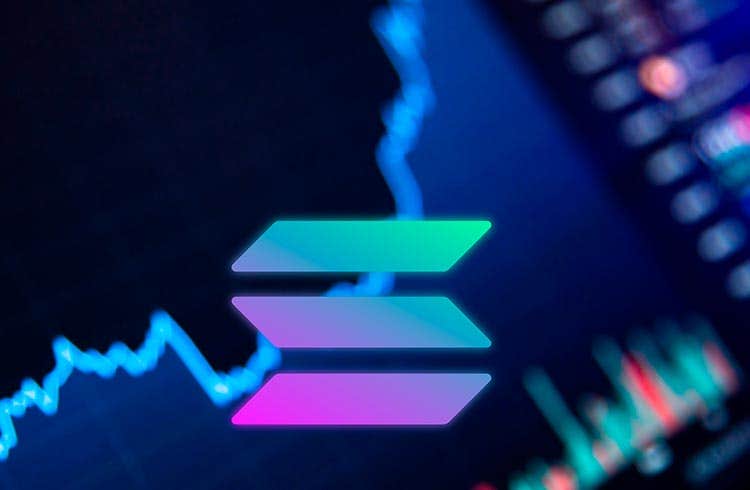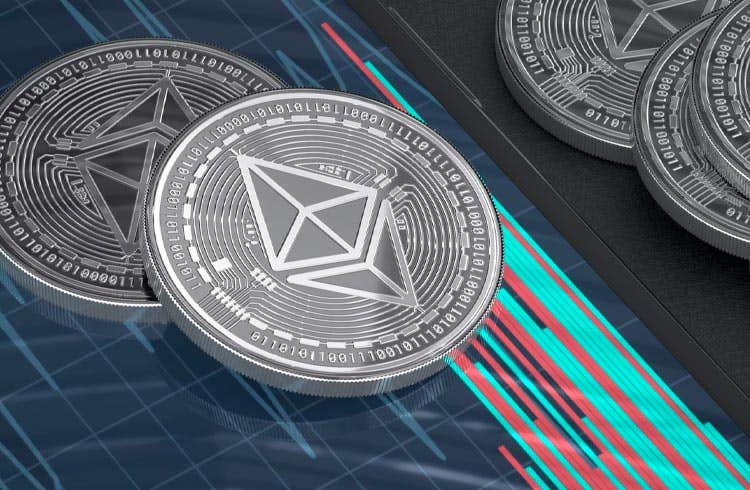Table of Contents
Cardano is a third-generation decentralized blockchain platform based on the proof-of-stake (PoS) principle. Cardano distinguishes itself from other blockchains by its scientific philosophy and research-driven approach. It was developed by a team of scientists, engineers, and experts who focus on creating a secure, scalable, and sustainable platform for decentralized applications (DApps), systems, and societies.
Use Cases of Cardano
Cardano has a wide range of use cases due to its flexible and robust technology:
- Financial Services: Cardano provides a secure platform for financial transactions, enabling the creation and management of digital assets and supporting the issuance of custom tokens.
- Healthcare: The platform can be used for managing medical records and securing patient data.
- Education: Educational institutions can use Cardano for managing certificates and student records.
- Supply Chains: Cardano allows tracking of products in supply chains from production to the end consumer, increasing transparency and trust.
Cardano Ecosystem
Cardano is supported by several key organizations involved in its development and adoption:
- Cardano Foundation: A Swiss non-profit organization focusing on the promotion and development of Cardano on a global scale.
- EMURGO: The commercial arm of Cardano, focused on promoting blockchain adoption through business partnerships and investments.
- Input Output Global (IOG): A research and development company founded by Charles Hoskinson, one of the founders of Cardano. IOG focuses on the development and maintenance of Cardano technology.
Development Stages of Cardano
Cardano’s development is divided into five major phases, each with specific goals and focus:
- Byron: The initial phase allowing users to buy and sell ADA, Cardano’s native token.
- Shelley: The decentralization phase, enabling the community to run nodes and participate in transaction validation.
- Goguen: The phase that introduced support for smart contracts and allowed the development of decentralized applications.
- Basho: Aimed at scalability and interoperability, improving network performance.
- Voltaire: Focused on decentralized governance, enabling the community to decide on future developments through voting and project funding.
ADA Price Prediction from 2025 to 2030
Predicting the future price of ADA is complex, but based on current developments and the potential of the Cardano project, the following scenarios can be estimated for each year:
2025
-
- Optimistic Scenario: ADA price could reach $5 to $7 if Cardano successfully implements planned phases and increases adoption across various sectors.
- Conservative Scenario: The price could be around $3 to $5 with steady growth and no major technological or regulatory issues.
- Pessimistic Scenario: In case of failures or regulatory hurdles, the price could remain at $1 to $2.
2026
-
- Optimistic Scenario: Continued growth and increased adoption could push the price to $7 to $10.
- Conservative Scenario: Stable growth might lead to a price of $5 to $7.
- Pessimistic Scenario: The price could hover around $2 to $3 if new challenges arise.
2027
-
- Optimistic Scenario: ADA price could exceed $10 and reach $12 to $15 with successful integration of new technological innovations.
- Conservative Scenario: Price around $7 to $10 with continued growth and adoption.
- Pessimistic Scenario: Price could be around $3 to $5 in case of adoption failures or regulatory interventions.
2028
-
- Optimistic Scenario: ADA could reach $15 to $18 due to further innovations and global adoption.
- Conservative Scenario: Stable growth might lead to a price of $10 to $12.
- Pessimistic Scenario: Price could be around $5 to $7 if obstacles arise.
2029
-
- Optimistic Scenario: Price could rise to $18 to $20 if Cardano becomes a major blockchain platform.
- Conservative Scenario: Price around $12 to $15 with steady growth and successful adoption.
- Pessimistic Scenario: Price around $7 to $10 in case of technological or regulatory challenges.
2030
-
- Optimistic Scenario: ADA price could exceed $20 and reach $25 if Cardano becomes a key technology for global financial systems and other industries.
- Conservative Scenario: Price around $15 to $20 with continued growth and adoption.
- Pessimistic Scenario: Price could be around $10 to $12 if the project faces significant challenges.
Future Development of Cardano
Cardano has ambitious future plans, including several key areas:
- Technological Innovations: Cardano continues to develop new technologies and improvements, such as increasing scalability and interoperability with other blockchains.
- Global Adoption: Cardano aims to increase its adoption across various industries, such as finance, healthcare, education, and supply chains. This move could significantly contribute to ADA’s value growth.
- Decentralized Governance: With the transition to the Voltaire phase, the Cardano community will be able to decide on the network’s future development through voting and decentralized governance. This ensures that the project responds to the community’s needs and can sustain and develop long-term.
- Ecosystem and Partnerships: Cardano collaborates with various partners and organizations globally, which can bring new opportunities and increase the platform’s adoption. Collaborations with governments and large corporations can open doors to new use cases and strengthen the ecosystem.
How to Stake Cardano – Step by Step
Staking ADA is a process where ADA token holders delegate their tokens to a staking pool to support the security and operation of the Cardano network and earn rewards in return.
- Create a Wallet
- Daedalus Wallet
- Download and install Daedalus Wallet from the official website.
- Launch the application and select “Create Wallet.”
- Enter the wallet name and password.
- Record your 24-word seed phrase and store it securely. This seed phrase allows you to recover your wallet in case of loss of access.
- Confirm the seed phrase as instructed in the application.
- Yoroi Wallet
- Install Yoroi Wallet as a browser extension from the official website.
- After installation, select “Create Wallet.”
- Enter the wallet name and password.
- Record your 15-word seed phrase and store it securely.
- Confirm the seed phrase as instructed in the application.
- Daedalus Wallet
- Transfer ADA to the Wallet
- Delegate ADA to a Staking Pool
- Daedalus Wallet
- Open Daedalus Wallet and go to the “Staking” section.
- Click on “Stake Pools” and search for the pool you want to delegate your ADA to.
- Click on “Delegate to this pool” and follow the instructions for delegation.
- Yoroi Wallet
- Open Yoroi Wallet and go to the “Delegation List.”
- Select the staking pool you want to delegate your ADA to.
- Click on “Delegate” and follow the instructions to confirm the delegation.
- Daedalus Wallet
- Monitor and Earn Rewards
- Regularly check your wallet to see your staking rewards.
- Both Daedalus and Yoroi allow you to monitor the performance of your staking pool and the rewards earned.
Daedalus
Daedalus is a full-node wallet that provides a complete replica of the Cardano blockchain, ensuring a high level of security. When staking with Daedalus, you can expect returns of around 5% APY. It is an excellent choice for those who prefer higher security levels, although it requires more storage space on your computer.
Yoroi
Yoroi is a lightweight wallet available as a browser extension and mobile application, making it easy to manage and stake ADA on the go. Staking with Yoroi offers similar returns of around 5% APY and is simpler to use because it does not require downloading the entire blockchain.
How to Run a Cardano Node – Step by Step
Prerequisites
- Hardware:
- Minimum recommended specifications: 8 GB RAM, dual-core CPU, 50 GB SSD, and a stable internet connection.
- Operating System: Linux (recommended), macOS, or Windows.
- Software: Install Git, GHC (Glasgow Haskell Compiler), and Cabal.
Installation of Cardano-node
- Install GHC and Cabal:
sudo apt-get update sudo apt-get install build-essential pkg-config libffi-dev libgmp-dev libssl-dev libtinfo-dev libsystemd-dev zlib1g-dev tmux git jq wget libncursesw5 libtool autoconf -y wget https://downloads.haskell.org/~ghcup/x86_64-linux-ghcup-0.0.7.tar.gz tar -xf ghcup-0.0.7.tar.gz ./ghcup-0.0.7/install.sh - Install Cardano-node:
git clone https://github.com/input-output-hk/cardano-node.git cd cardano-node cabal update cabal build all cp -p "$(./scripts/bin-path.sh cardano-node)" ~/.local/bin/ cp -p "$(./scripts/bin-path.sh cardano-cli)" ~/.local/bin/
Node Configuration
- Download configuration files:
mkdir $HOME/cardano-node/config cd $HOME/cardano-node/config wget https://hydra.iohk.io/build/7190168/download/1/mainnet-config.json wget https://hydra.iohk.io/build/7190168/download/1/mainnet-shelley-genesis.json wget https://hydra.iohk.io/build/7190168/download/1/mainnet-byron-genesis.json wget https://hydra.iohk.io/build/7190168/download/1/mainnet-topology.json - Run the node:
cardano-node run \ --topology $HOME/cardano-node/config/mainnet-topology.json \ --database-path $HOME/cardano-node/db \ --socket-path $HOME/cardano-node/db/node.socket \ --host-addr x.x.x.x \ --port 3001 \ --config $HOME/cardano-node/config/mainnet-config.json
Blockchain Synchronization
This process can take several hours to days depending on your connection speed and hardware performance.
Monitoring and Maintenance
Regularly check the node status using Cardano-cli commands and keep the software updated.
Conclusion
Cardano represents an ambitious project with the potential to bring significant changes to various industries. Its success will depend on the team’s and community’s ability to achieve set goals and overcome the challenges posed by the dynamic world of cryptocurrencies.
- Michaël van de Poppe: Bitcoin to Hit $500,000 This Cycle? 🚀💸 Or Just Another Crypto Fairy Tale? - December 21, 2024
- What is the Meme Coin Bonk, Price Predictions 2025–2030, and Why Invest in BONK? - December 18, 2024
- BNB Price Analysis: 17/12/2024 – To the Moon or Stuck on a Layover? - December 17, 2024







![Best Platforms for Copy Trading in [current_date format=Y] 12 Best Platforms for Copy Trading](https://cryptheory.org/wp-content/uploads/2024/12/copy-trading-350x250.jpg)

![Top 10 Cryptocurrency Platforms for Grid Trading in [current_date format=Y] 14 Top 10 Cryptocurrency Platforms for Grid Trading](https://cryptheory.org/wp-content/uploads/2024/12/grid-trading-350x250.jpg)

![BingX Exchange: A Detailed Guide to Using, Trading, and Maximizing Features in [current_date format=Y] 16 BingX Exchange: A Detailed Guide to Using, Trading, and Maximizing Features](https://cryptheory.org/wp-content/uploads/2024/11/4-5-350x250.jpg)














